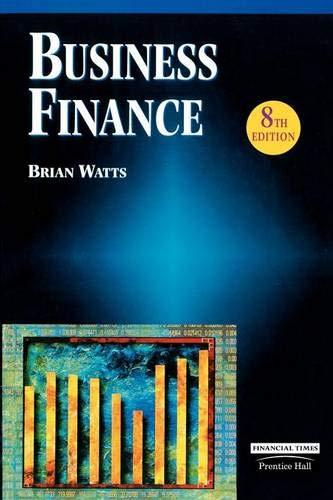Question
37. Which of the following would not be a Pareto superior move? a. A market exchange. b. A group that unanimously decides to undertake an
| 37. | Which of the following would not be a Pareto superior move? |
|
| a. A market exchange. |
|
| b. A group that unanimously decides to undertake an activity. |
|
| c. A group that decides by majority rule to undertake an activity. |
|
| d. A contingent contract for a group to undertake an activity at some time in the future. |
|
|
|
| 38. | Which of the following is not a negative externality? |
|
| a. smog |
|
| b. noise pollution |
|
| c. substandard housing |
|
| d. majority voting |
|
|
|
| 39. | Political decisions will be _____ only if the decision was approved by _____. |
|
| a. Pareto improvements; a unanimous vote |
|
| b. in the public interest; a majority vote |
|
| c. Pareto improvements; a majority vote |
|
| d. undertaken; a unanimous vote |
| 40. | A unanimity rule for collective decision making has the disadvantage of _____. |
|
| a. accepting too many inefficient outcomes |
|
| b. high decision-making costs |
|
| c. not clearly being a Pareto improvement |
|
| d. increasing external costs |
|
|
|
|
|
|
| 41. | Which of the following is not true of collective decision-making costs? |
|
| a. They impede collective action. |
|
| b. They are the reason why unanimity rule is not the optimal decision-making rule. |
|
| c. They imply that simple majority rule is the optimal decision-making rule. |
|
| d. They increase the closer the decision rule gets to unanimity. |
|
|
|
| 42. | In the context of collective decision-making, external costs are _____. |
|
| a. the costs imposed on everyone in the group |
|
| b. the costs imposed on those outside the group |
|
| c. the costs imposed on those who voted for the decision |
|
| d. the costs imposed on those harmed by the decision |
|
|
|
| 43. | With a unanimity decision-making rule, external costs are _____. |
|
| a. zero |
|
| b. indeterminate |
|
| c. high |
|
| d. minimized |
| 44. | The median voter theorem examines the outcome of majority rule decisions and _____. |
|
| a. concludes that the outcome will be the one preferred by the median voter |
|
| b. assumes that the outcome will be determined by the median voter |
|
| c. uses the median voter to analyze the decision-making of bureaucrats |
|
| d. found that the median voter has no role in political decision-making |
Step by Step Solution
There are 3 Steps involved in it
Step: 1

Get Instant Access to Expert-Tailored Solutions
See step-by-step solutions with expert insights and AI powered tools for academic success
Step: 2

Step: 3

Ace Your Homework with AI
Get the answers you need in no time with our AI-driven, step-by-step assistance
Get Started


